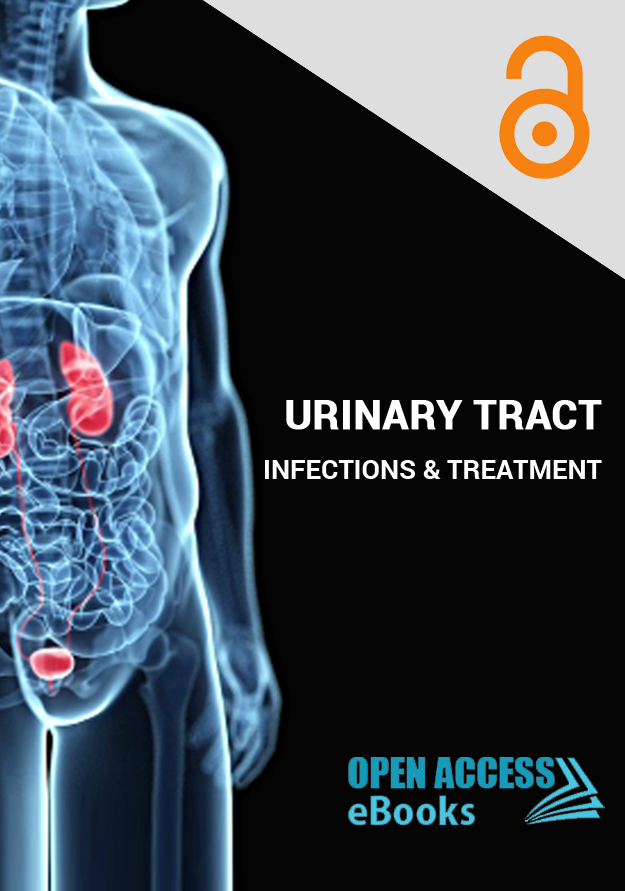List of Chapters
Urinary tract infections & treatment
Author(s) :Banerjee A*; Marotta F*; Ganesan J; Sushmitha S; Murugesan R; Madhumala G; Bissi L; Pathak S
This chapter focuses on the urinary tract infections (UTI) which is caused due to the invasion of microorganisms into the urinary tract, mostly by bacterial species. It is one of the most commonly occurring disease in human worldwide, next to the common cold and flu and it predominantly affects women as compared to men. In this chapter, we discussed about the UTI pathogenesis, various natural compounds and antibiotics used for treating this infection. UTI starts with the invasion of uropathogens into the urinary tract; followed by the evasion from the immune system, thereby it colonizes and gets multiplied. The bacterial toxins produced by uropathogens mediate the lysis of host epithelial cells and favors the bacteraemia. It can transfer from one individual to other via direct contact. In UTI, the host factors such as menopause, plays a major role where in post-menopaused women, the decolonization of lactobacillus species facilitates the colonization of E.coli. The diagnostic method for UTI varies from conventional method to advanced diagnostic tools such as from urine culture (microbiological plate culture) to MRI and Pyelogram. Certain phytocompounds from plants have some bactericidal properties and they are used for the treatment of UTI. This overview of UTI gives us a better knowledge to focus and therapeutic aspects towards the remedial measures.
Recurrent urinary tract infections and management
Author(s) :Seema Mittal*; Ashok Kumar; Priyanka Yadav; Pallavi Sayal
Urinary tract infection(UTI) is a condition in which one or more parts of the urinary system (the kidneys, ureters, bladder, and urethra) become infected. UTIs are the most common of all bacterial infections and can occur at any time in the life of an individual. Nearly 95% of cases of UTIs are caused by bacteria that typically multiply at the opening of the urethra and travel up to the bladder. Much less often, bacteria spread to the kidney from the bloodstream.Normally, the urinary tract is sterile, but urinary tract infections can be caused by a variety of conditions They can cause complicated or uncomplicated, symptomatic or asymptomatic infections. Anatomically can be divided into upper and lower tract infections.
5-Alpha reductase inhibitors in the management of benign prostatic hyperplasia : A rationale
Author(s) :Neelima Dhingra
Benign Prostatic hyperplasia and its clinical manifestation as lower urinary tract symptoms is a major health concern for aging men. Prevalence increases with age, affecting about 60% of men aged over 50 years, and 80% by the age of 80 years. Nearly all men will develop microscopic BPH by the age of 90 [1]. Despite the high prevalence of BPH in aged men population, the disease pathogenesis is far from complete understanding. It is the non-malignant enlargement of the prostate gland caused by increase in the number of stromal and epithelial cells, resulting in obstruction of the proximal urethra, thus causes urinary flow disturbances. Although many men with mild to moderate symptoms do well without therapy, others have gradually increasing symptoms and require medical therapy or surgery. BPH is a rarely fatal but if left untreated, chronic obstructions can lead to the back up of urine into the ureters and compromises kidney function, thus serious life threatening complications such as acute urinary retention may arises [2].
An Overview to the Treatment of Bacterial Infections of Urinary Tract
Author(s) :Deniz AVCI*, Ali Cetinkaya
Bacterial infection of the urinary tract is defined as the presence of bacteria in the urinary tract and the symptoms should be attributable to this organism. Urinary Tract Infections (UTI) are more common in women due to the anatomical disadvantage. Many UTI cases in males are complicated and are associated with abnormalities in the urinary tract. As age progresses, the incidence of UTI also increases.
Alpha Adrenergic Blockers in Urinary Obstructions due to Benign Prostatic Hyperplasia
Author(s) :Neelima Dhingra*
Benign prostatic hyperplasia (BPH) is the nonmalignant enlargement of prostate gland due to increase in number of stromal and epithelial cells [1]. Prevalence has been found to increase with advancing age affecting over 80% men above 70 years. As men age, the caliber of the urinary stream diminishes [2]. The diminution of the urinary stream was assumed to be attributable to Bladder Outlet Obstruction (BOO) arising directly from the BPH. It was also assumed that BOO resulted in lower Urinary Tract Symptoms (LUTS), that range from mild to severe obstructive and irritative symptoms of weak stream, abdominal straining, hesitancy, incomplete bladder emptying, terminal dribbling, nocturia and dysuria [3].
Genetics and Urinary Tract Infections
Author(s) :Cristina-Crenguța Albu*
Urinary tract infection is a collective term that describes any infection that involve any part of the urinary tract: upper urinary tract (kidneys and ureters) or lower urinary tract (blad-der and urethra) [1].
According to Magdalena E. Sobieszczyk (Columbia University), lower urinary tract infections include cystitis, urethritis and prostatitis, and upper urinary tract infections include pyelonephritis, intra-renal abscess and perinephric abscess.
